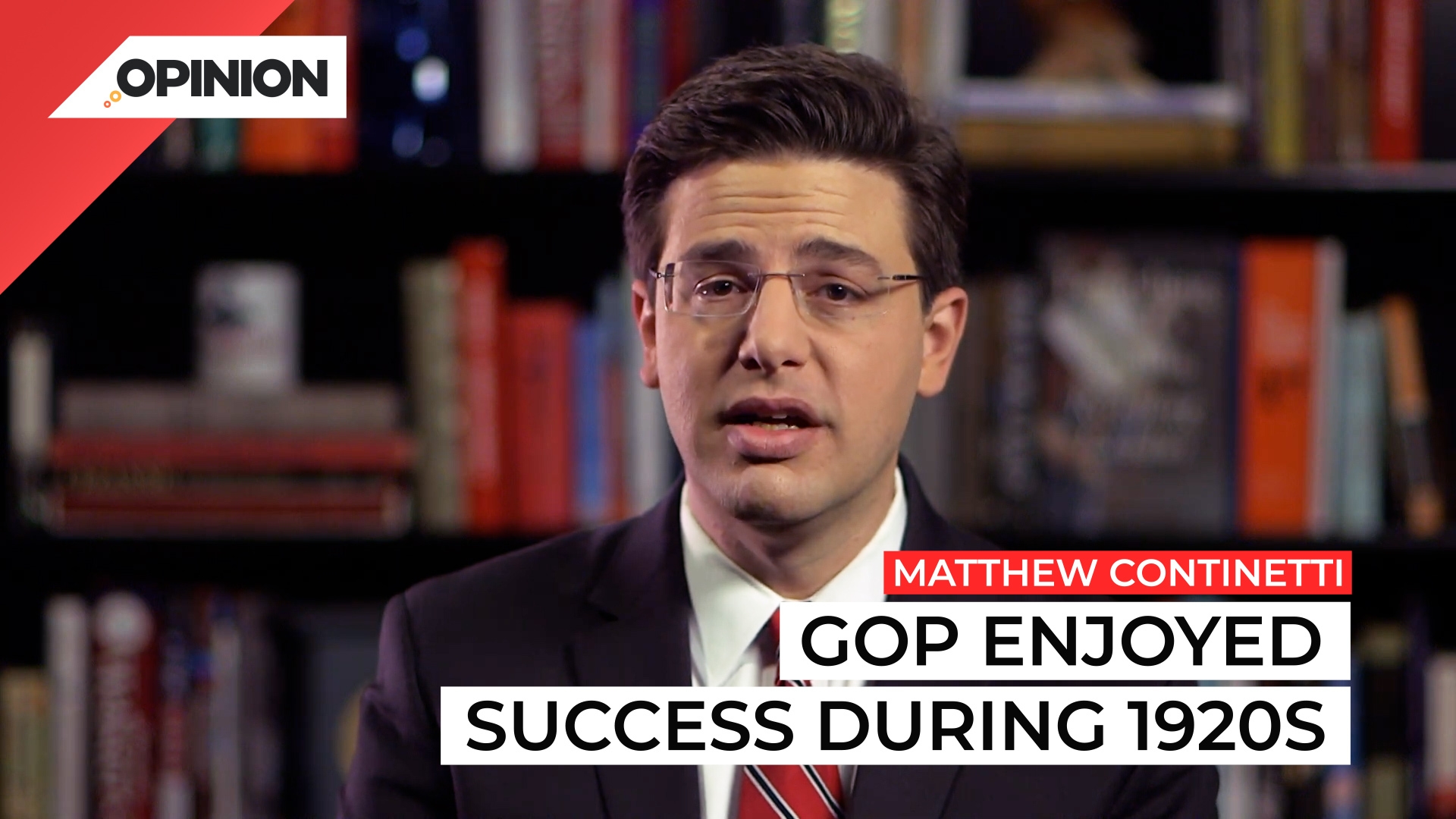
Commentary
-
Our commentary partners will help you reach your own conclusions on complex topics.
It’s hard to think of two presidents with less in common than Calvin Coolidge and Donald Trump. For one thing, Coolidge held a variety of public offices before becoming president on Aug. 2, 1923. Mr. Trump had no government or military experience before his inauguration in 2017.
Yet these personal differences obscure important political similarities. Both Coolidge and Trump staked their presidencies on voter satisfaction with broadly shared prosperity. Both supported restricting immigration into the United States. Both wanted to protect American industry from foreign competition. Both wanted to avoid overseas entanglements.
As I explain in my new book, The Right: The Hundred Year War for American Conservatism, Trump’s views now dominate the Republican Party. For anyone who grew up with the GOP of Ronald Reagan, this can be strange and bewildering.
But in many respects, it’s a return to the principles of the 1920s, of Coolidge and his predecessor Warren Harding. Their conservatism appealed to an American electorate that had soured on its experiences with the Progressive movement and with World War One.
“Our supreme task,” President Harding said in his inaugural address, “is the resumption of our onward, normal way.”
For Harding, “normalcy” meant nation-building at home. He raised tariffs and restricted imports. And he venerated the Constitution.
Calvin Coolidge did not depart from this constitutionalist path. To Coolidge, the Declaration of Independence and the Constitution offered the last words in a centuries-long argument over popular sovereignty. Coolidge argued that success in self-government was related to religious faith. Political freedom depended on traditional morality and self-control. He called on Americans to preserve the inheritance of the Founders.
Harding and Coolidge’s conservatism was delegitimized by the crises that followed their presidencies. The Great Depression robbed the right of its claim to promoting prosperity. Then World War II discredited the right’s noninterventionist foreign policy. What emerged from the rubble was a postwar conservative movement that embraced alliances, military intervention, forward defense, free trade and open immigration to defeat communism and fuel economic growth. This postwar conservative internationalism may have been an aberration.
Today, the GOP is reverting to its pre-World War II identity as the party of low taxes, economic protection, restricted immigration, wariness of foreign intervention and religious piety. This retro-Republicanism could turn out to be a popular mix, but history shows that it is also a combustible one. In its protectionism, resistance to immigration, religiosity, and antipathy to foreign entanglements, Donald Trump’s Make America Great Again movement resembles the conservatism of the 1920s—with one significant difference.
In the 1920s, the right was in charge. A century later, in the early 2020s, the right has been driven from power at the federal level. It has been locked out of the commanding heights of American culture. Its rhetoric has often veered into conspiracy theory.
Cultural estrangement and economic insecurity have made today’s Republicans much more open to government intervention in the market than their forebears. Harding and Coolidge stood for “normalcy” and “Americanism.”
Even when he was president, however, Trump stood outside the system. Trump did not maintain the status quo. He challenged it.
As the GOP has returned to its early 20th-century roots, it has struggled to persuade Americans that its agenda and spokesmen are within the mainstream. The right has benefited more from the false steps of its opponents than the popularity of its own ideas and leading figures.
All of which might give Republicans pause as they embrace the changes brought about by Donald Trump and look forward to the midterm election this November.
After all, the GOP enjoyed tremendous success during the 1920s—and then spent the next 40 years in the political wilderness.
-
What kind of leader America needs
The American public remains divided and unhappy about the state of the country leading up to the next presidential election, and former President Donald Trump now holds a narrow lead in the matchup against President Biden. While Biden portrays Trump as a threat to American democracy, voters in key states ironically trust the former president…
-
NATO is stronger now than ever before
The North Atlantic Treaty Organization (NATO) has been called the most powerful military alliance in world history, and serves as the bedrock of military security for Europeans, Americans and allied populations around the globe. The importance of the alliance has been reiterated by recent events, namely Russia’s invasion of Ukraine and increasing threats from China.…
-
Who will Trump pick for vice presidential running mate?
Donald Trump is now clearly on track to run as the GOP candidate for president in the 2024 elections, regardless of how his various criminal trials proceed. What’s less clear is who else might run as his running mate for the position of vice president. Straight Arrow News contributor Matthew Continetti reviews a list of…
-
Education, income becoming key variables in elections
Education, income level, geography, race and ethnicity are all key variables in estimating who voters might support. But the importance of these variables has changed in recent elections, as America’s demography, culture and political movements continue to evolve. Straight Arrow News contributor Matthew Continetti argues that education and income level have become more important than…
-
If we’re lucky, AOC and the Squad are on their way out
The Squad, comprised of eight left-wing House Democrats, has been openly critical of Israel both before and during Israel’s war with Hamas. As primaries approach, some of these House members are facing challenging political races. Straight Arrow News contributor Matthew Continetti delves into the backlash against the Squad and hopes its members will face a…
Latest Opinions
-
 U.S. Department of Defense
U.S. Department of Defense
Congress still trying to figure out how to reduce wasteful military spending
-
 DVIDS
DVIDS
US Navy, Air Force making waves with new weapons at RIMPAC
-
 Getty Images
Getty Images
Israeli PM Netanyahu meets with Trump at Mar-a-Lago
-
 Getty Images
Getty Images
Growing US nuclear power resurgence reaches the nation’s heartland
-
 Getty Images
Getty Images
Beer from the sun, other solar thermal projects get government funding
Popular Opinions
-
In addition to the facts, we believe it’s vital to hear perspectives from all sides of the political spectrum.


